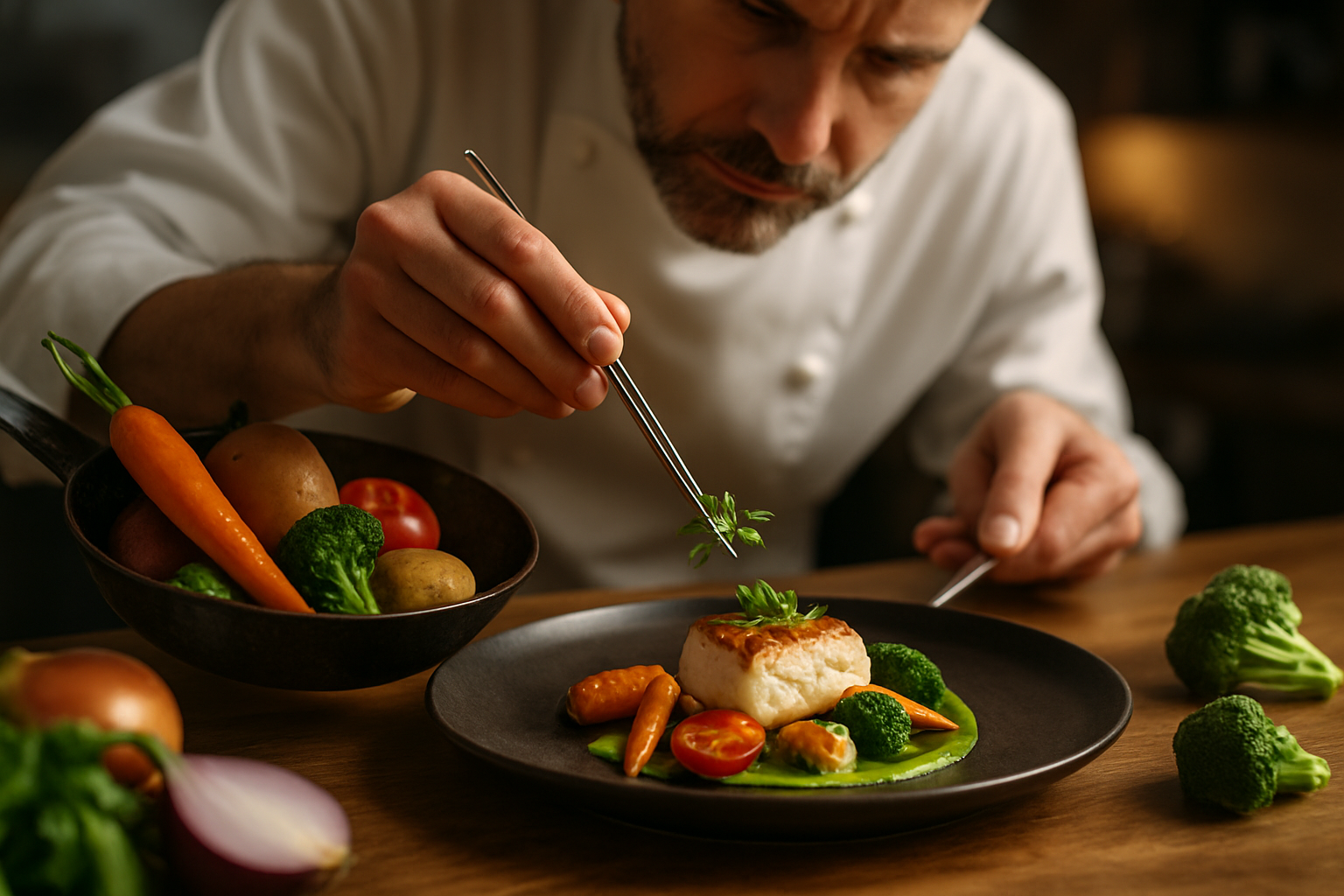Culinary Alchemy: Transforming Humble Ingredients into Gourmet Delights
Discover the art of elevating everyday ingredients into extraordinary culinary creations. From simple pantry staples to overlooked produce, learn how to transform humble components into restaurant-worthy dishes that will impress even the most discerning palates. Get ready to unlock your inner culinary alchemist!

Vegetable Virtuosity: Reimagining Produce
Vegetables are often relegated to side dish status, but with a little creativity, they can take center stage in truly memorable meals. Take the cauliflower, for example. Once steamed and served plain, it’s now being transformed into everything from pizza crusts to rice substitutes. Roasted whole and carved like a steak, it becomes a showstopping main course. Even the humble carrot can be elevated to gourmet status. Try slow-roasting them with honey and thyme until they’re caramelized and tender, then topping them with a tangy yogurt sauce and a sprinkle of dukkah. The result is a dish that’s both familiar and excitingly new. By approaching vegetables with the same care and attention usually reserved for proteins, we can create plant-based dishes that are satisfying, nutritious, and undeniably delicious.
The Art of Flavor Pairing
One of the secrets to transforming simple ingredients into gourmet delights lies in understanding the art of flavor pairing. This culinary skill goes beyond the basics of sweet and savory, delving into the complex world of complementary and contrasting flavors. For instance, the earthy sweetness of roasted beets can be elevated by pairing them with tangy goat cheese and the bright crunch of pistachios. Or consider the classic combination of strawberries and balsamic vinegar – the acidity of the vinegar enhances the natural sweetness of the fruit, creating a sophisticated dessert with just two ingredients. By experimenting with unexpected flavor combinations, even the most basic ingredients can be transformed into something extraordinary. The key is to balance flavors, textures, and temperatures to create dishes that are greater than the sum of their parts.
Textural Transformations
Texture plays a crucial role in our perception of food, and mastering various cooking techniques can help transform humble ingredients into gourmet experiences. Take the potato, for example. Mashed, it’s comfort food. But what if you twice-cook it? First, boil until tender, then smash and roast until crispy. The result is a textural delight with a creamy interior and crispy exterior. Or consider the avocado – typically served raw, but have you tried grilling it? The heat caramelizes the flesh, adding a smoky flavor and creating a contrast between the warm, charred exterior and the cool, creamy interior. Even a simple egg can be transformed through different cooking methods. From silky soft-boiled to crispy fried, each technique brings out different qualities in this versatile ingredient. By paying attention to texture and employing various cooking methods, we can elevate even the most basic ingredients into something special.
The Power of Presentation
They say we eat with our eyes first, and presentation can indeed transform a simple dish into a gourmet experience. This doesn’t mean you need to create elaborate, cheffy plating – sometimes, the most effective presentations are the simplest. Consider serving a rustic vegetable soup in a hollowed-out pumpkin, or presenting a simple fruit salad in a scooped-out watermelon half. Even something as basic as arranging sliced vegetables in a spiral pattern can elevate a tart from homely to elegant. Color also plays a crucial role in presentation. A monochromatic dish of roasted root vegetables becomes more appealing with a sprinkle of bright green herbs or a drizzle of vibrant beet puree. By paying attention to color, arrangement, and serving vessels, you can transform humble ingredients into visually stunning dishes that look as good as they taste.
Useful Tips & Tricks
• Always taste as you go – seasoning is key to elevating simple ingredients
• Invest in a few high-quality ingredients like good olive oil or aged balsamic vinegar
• Learn basic knife skills to improve the texture and presentation of your dishes
• Don’t be afraid to experiment with different cooking methods for familiar ingredients
• Fresh herbs can instantly elevate a dish – try growing your own for easy access
• Consider texture when planning a dish – aim for a mix of crunchy, creamy, and chewy
• Garnishes aren’t just for show – they can add crucial flavor and textural elements
Conclusion
Transforming humble ingredients into gourmet delights is not about fancy equipment or hard-to-find ingredients. It’s about approaching familiar foods with creativity, understanding flavor combinations, and mastering basic cooking techniques. By reimagining pantry staples, elevating vegetables, experimenting with flavors and textures, and paying attention to presentation, anyone can create restaurant-worthy dishes at home. So the next time you look in your pantry or fridge, don’t just see ingredients – see possibilities. With a little culinary alchemy, you can turn the ordinary into the extraordinary, one dish at a time.





